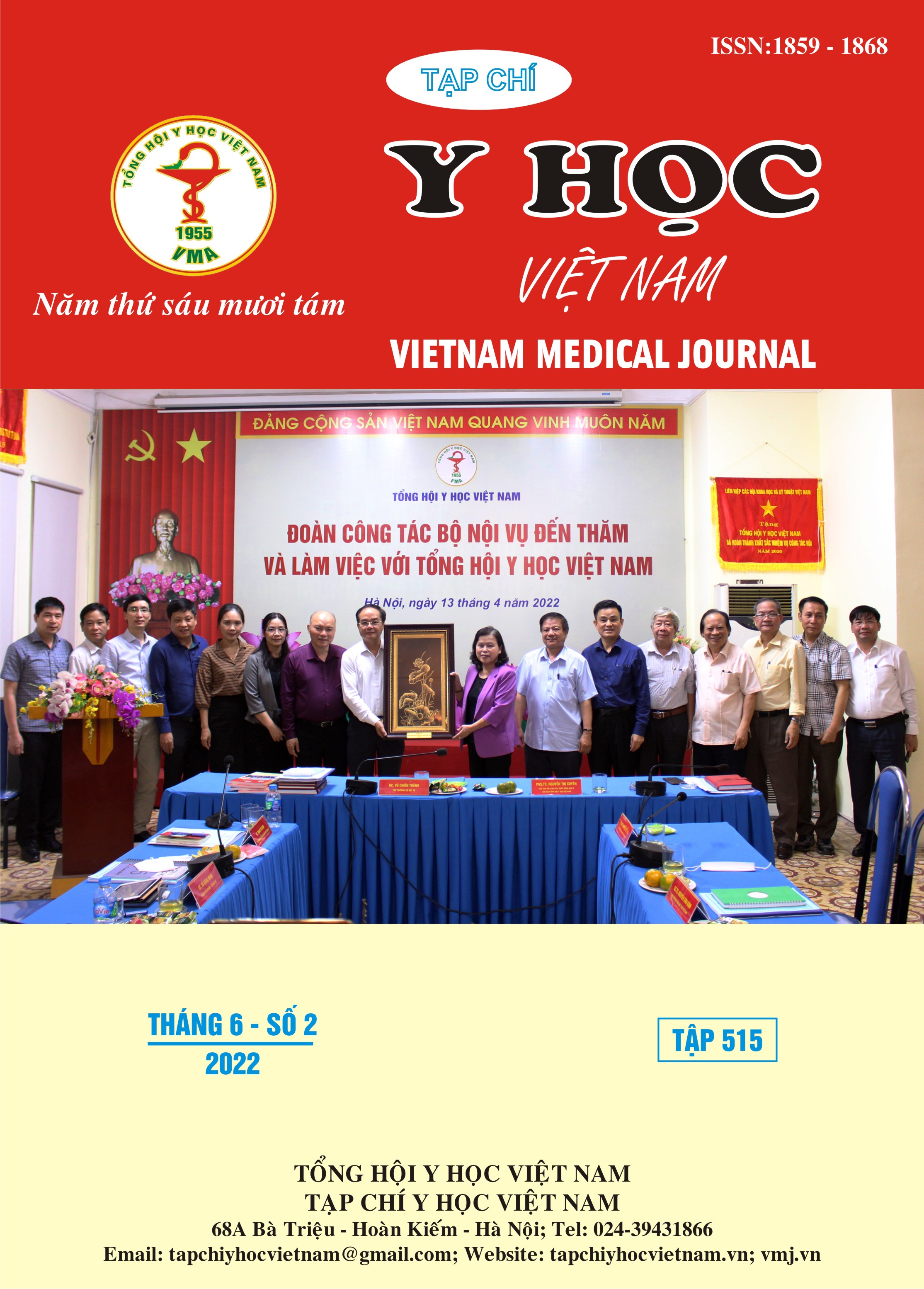THE SITUATION OF MICRONUTRIENT DEFICIENCY IN CHDRENT FROM 6 MONTHS TO LOWER 5 YEARS OLD
Main Article Content
Abstract
Nutrition plays an important role in physical and mental development of children, especially children under 5 years old. Besides malnutrition, micronutrient deficiency is also an important health problem. The study was established with 234 children from 6 months to 5 years old at the Nutrition Clinic, National Children's Hospital, during the period from September 2020 to September 2021 by a cross-sectional prospective study, aiming to assess micronutrient deficiency status in children. Research results: Children with micronutrient deficiency accounted for 73.0%, of which iron deficiency accounted for the highest rate (36.8%), followed by zinc deficiency (28.6%), vitamin D deficiency (20.9%) and calcium deficiency (3.0%). Iron and zinc deficiency rates among children living in rural areas were higher than those in urban areas, at 27.1% compared with 40.9% and 14.3% compared to 34.8%, respectively, the difference was statistically significant with p < 0.05. Conclusion: Micronutrient deficiency rate in children from 6 months to 5 years old is still high, in which iron deficiency accounts for the highest percentage. Children living in rural areas have a higher rate of micronutrient deficiencies than children living in urban areas.
Article Details
Keywords
micronutrient deficiency, infant, children
References
2. Trần Thúy Nga, Nguyễn Quang Dũng, Đặng Thúy Nga. Tình trạng thiếu vitamin A, kẽm ở trẻ dưới 5 tuổi tại 5 xã, huyện Lạc Sơn, tỉnh Hòa Bình. Tạp chí Y học dự phòng. 2014;4(153).
3. World Health Organization. WHO guideline on use of ferritin concentrations to assess iron status in individuals and populations. 2020. https:// apps.who.int/iris/handle/10665/331505. Licence: CC BY-NC-SA 3.0 IGO.29.
4. Maverakis E, Fung MA, Lynch PJ, et al. Acrodermatitis enteropathica and an overview of zinc metabolism. Journal of the American Academy of Dermatology. 2007;56(1):116-124.
5. Munns CF, Shaw N, Kiely M, et al. Global consensus recommendations on prevention and management of nutritional rickets. Hormone research in paediatrics. 2016;85(2):83-106.
6. World Health Organization. Anaemia in Women and Children: WHO Global Anaemia Estimates, 2021 Edition. World Health Organization; Geneva, Switzerland: 2021. [(accessed on 29 September 2021)]. Available online: https://www.who.int/data/gho/data/themes/topics/anaemia_in_women_and_children.
7. Das J.K, Kumar R, Salam R.A et al. Systematic review of Zinc fortification trials. Ann Nutr Metab. 2013;62(1):44-56.
8. Trần Thị Nguyệt Nga, Vũ Thị Thu Hiền, Nguyễn Thị Lâm và cộng sự. Thiếu vitamin D và một số yếu tố liên quan ở trẻ 12-36 tháng tại huyện Gia Lộc, tỉnh hải Dương. Tạp chí Y học thực hành. 2016;2(996):66-70.


